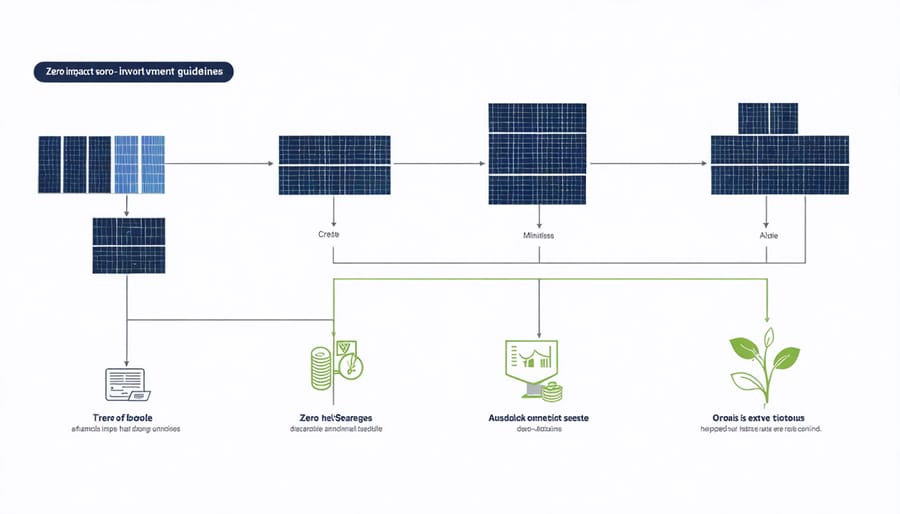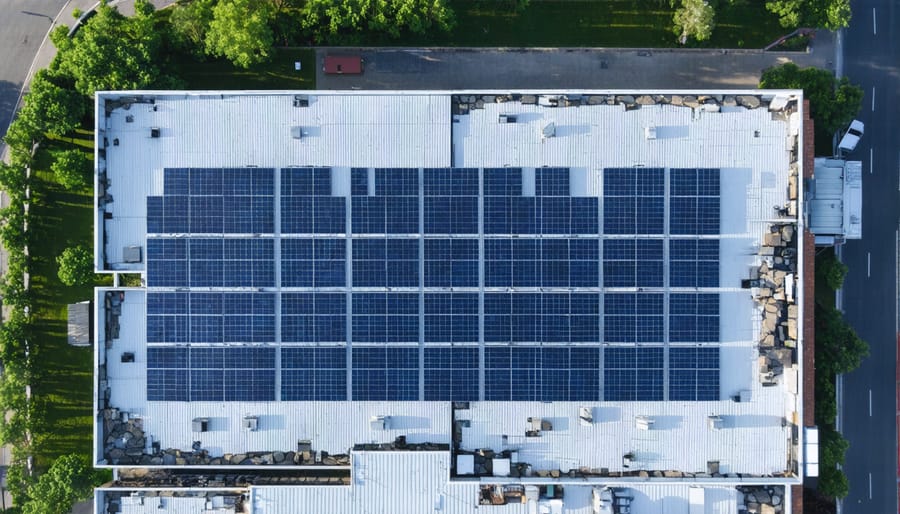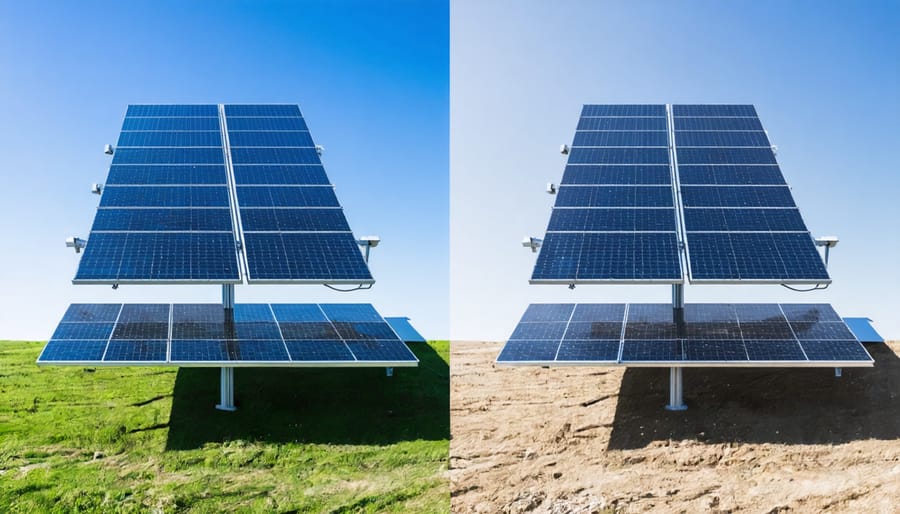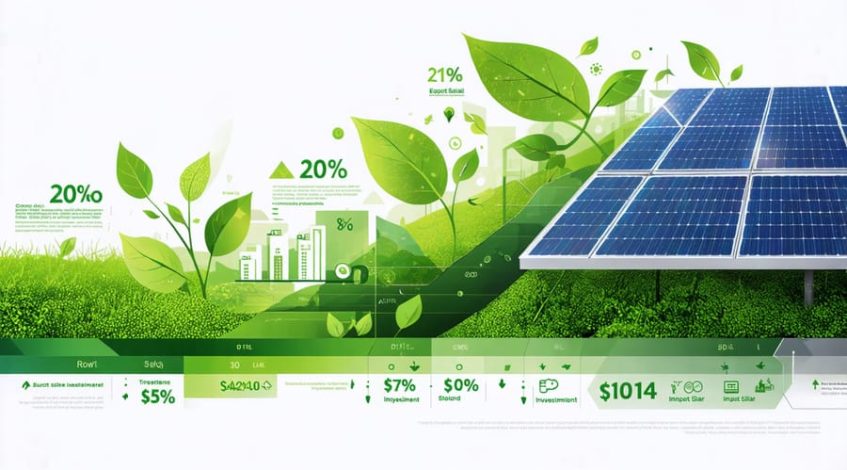Transform your energy investments into cost-neutral assets through zero impact solutions – the revolutionary approach that eliminates financial barriers to solar adoption while maximizing environmental benefits. By leveraging innovative financing models, tax incentives, and strategic solar energy partnerships, organizations can implement comprehensive solar installations without capital expenditure.
This game-changing framework enables businesses to generate clean energy, reduce operational costs, and achieve sustainability goals while maintaining positive cash flow from day one. Leading corporations worldwide have already deployed zero impact solutions to power their facilities, resulting in immediate savings that offset implementation costs and create long-term value.
As energy markets evolve and environmental regulations tighten, zero impact solutions represent the future of corporate sustainability – delivering measurable returns while advancing global climate objectives. For decision-makers seeking both financial prudence and environmental leadership, this approach provides a clear pathway to achieving both goals simultaneously.
Understanding Zero Impact Solar Investment
Financial Neutrality
Zero impact solutions achieve financial neutrality through a carefully structured approach that balances initial investments with long-term returns. By leveraging innovative financing mechanisms, such as Power Purchase Agreements (PPAs) and performance contracts, organizations can implement sustainable energy solutions without upfront capital expenditure. These arrangements ensure that operational savings offset implementation costs, creating a self-sustaining financial model.
The key to achieving cost neutrality lies in maximizing cost savings through solar partnerships and revenue generation opportunities. Energy efficiency improvements typically generate immediate cost reductions, while excess power generation can be sold back to the grid or utilized in demand response programs. Additionally, organizations can benefit from various incentives, including tax credits, renewable energy certificates, and government grants.
Strategic timing of infrastructure upgrades and phased implementation further enhances financial viability. By aligning renewable energy installations with scheduled equipment replacements, organizations can minimize disruption and optimize their investment timing. This approach, combined with proper maintenance and performance monitoring, ensures sustained cost neutrality throughout the solution’s lifecycle.

Environmental Balance
Environmental offset mechanisms play a crucial role in achieving true zero impact solutions through solar energy implementation. The process involves carefully calculating an organization’s carbon footprint and implementing corresponding measures to neutralize environmental impacts. This includes direct emissions from operations, indirect emissions from purchased electricity, and other scope 3 emissions throughout the supply chain.
Carbon neutrality is achieved through a combination of emission reduction strategies and offset mechanisms. Solar installations can significantly reduce operational emissions, while remaining environmental impacts can be balanced through verified carbon offset programs, renewable energy certificates (RECs), and investment in environmental conservation projects.
Organizations implementing zero impact solutions typically follow a hierarchical approach: first minimizing energy consumption through efficiency measures, then maximizing renewable energy generation through solar installations, and finally offsetting any remaining environmental impact through verified programs. This comprehensive strategy ensures that environmental claims are credible and measurable.
The key to successful environmental balance lies in accurate measurement and verification protocols, ensuring that offset mechanisms genuinely compensate for any remaining environmental impact after solar implementation. Regular auditing and adjustment of offset mechanisms ensure continued effectiveness and compliance with environmental goals.
Structuring Zero Impact Partnerships
Key Stakeholder Roles
The successful implementation of a zero impact solution requires clear definition and coordination of key stakeholder roles within the partnership structure. The project owner, typically the business or organization implementing the solar installation, maintains overall project oversight and ensures alignment with organizational goals and sustainability targets.
Financial partners play a crucial role by providing capital investment and structuring the power purchase agreement (PPA). They conduct thorough due diligence, assess project viability, and manage financial risks throughout the project lifecycle. Solar developers and engineering firms handle technical aspects, including system design, equipment specification, and installation planning.
Facility managers serve as essential liaisons, coordinating site access, maintenance schedules, and operational integration. They work closely with the implementation team to minimize disruption to existing operations while maximizing system performance. Legal counsel ensures compliance with regulations, reviews contracts, and protects stakeholder interests throughout the agreement period.
Local utilities and grid operators contribute by facilitating interconnection requirements and managing power distribution. Government agencies may participate through permitting processes and incentive programs that support project feasibility. Additionally, sustainability consultants often provide valuable expertise in measuring and verifying environmental impact reductions and ensuring compliance with corporate sustainability goals.
Success depends on clear communication channels and well-defined responsibilities among all parties, with regular progress monitoring and performance tracking against established metrics.
Risk Distribution Models
Risk distribution in zero impact solutions involves strategic allocation of financial and operational responsibilities among multiple stakeholders. The primary model typically incorporates three key participants: the facility owner, the solar developer, and the financing institution. Each party assumes specific risks while benefiting from defined rewards, creating a balanced ecosystem that supports project success.
Facility owners generally bear minimal upfront costs while accepting long-term power purchase agreements (PPAs). These agreements transfer operational risks to solar developers while guaranteeing predictable energy costs. Solar developers, in turn, manage performance risks through comprehensive maintenance programs and production guarantees, ensuring system optimization throughout the contract period.
Financial institutions play a crucial role by providing capital and assuming credit risks. They mitigate these risks through careful due diligence and structured payment mechanisms. Insurance products further protect against equipment failure, natural disasters, and performance shortfalls, creating additional security layers for all parties involved.
Modern risk distribution models often incorporate innovative features such as performance-based pricing and shared savings arrangements. These mechanisms align stakeholder interests and create positive incentives for system optimization. Some models also include community benefit agreements, distributing advantages beyond immediate project participants.
The success of these risk distribution models relies on clear contractual frameworks, transparent monitoring systems, and established dispute resolution procedures. Regular performance reviews and adaptive management strategies ensure that risk allocation remains effective throughout the project lifecycle.
Implementation Strategy
Initial Assessment and Planning
A successful zero impact solution begins with a comprehensive assessment of your facility’s current energy consumption patterns, infrastructure capabilities, and financial parameters. This evaluation forms the foundation of an effective implementation framework that ensures optimal results.
Start by conducting a detailed energy audit to identify peak usage periods, seasonal variations, and potential efficiency improvements. This data-driven approach helps determine the appropriate solar system size and configuration needed to achieve zero net energy costs. Consider factors such as available roof or ground space, structural integrity, and local regulations that might impact installation.
Financial modeling is crucial during this phase. Calculate current energy expenses, projected savings, available incentives, and financing options. This analysis should include maintenance costs, insurance requirements, and potential revenue streams from excess energy generation. Many organizations find that proper planning can reveal additional cost-saving opportunities beyond initial projections.
Develop a clear timeline that accounts for permitting processes, equipment procurement, installation schedules, and grid connection requirements. Engage key stakeholders early to ensure alignment with organizational goals and secure necessary approvals. Consider seasonal factors that might affect installation efficiency or energy production.
Create contingency plans for various scenarios, including unexpected technical challenges or regulatory changes. Establish clear metrics for measuring success, such as energy production targets, cost savings benchmarks, and carbon reduction goals. Regular monitoring and adjustment capabilities should be built into the planning phase to ensure long-term success and maximize return on investment.

Execution and Monitoring
Successful implementation of a zero impact solution requires meticulous execution and continuous monitoring to ensure optimal performance and expected returns. Begin by establishing clear key performance indicators (KPIs) that align with your project goals, including energy production targets, cost savings, and carbon offset measurements.
Implement a robust monitoring system that tracks real-time energy generation, consumption patterns, and financial performance. Modern energy management platforms offer comprehensive dashboards that provide instant access to critical metrics and alert stakeholders to any deviations from expected performance.
Regular maintenance schedules should be established and strictly followed to prevent system degradation. This includes routine inspections, cleaning of solar panels, and performance testing of all components. Document all maintenance activities and system modifications to maintain accurate records for warranty purposes and performance optimization.
Performance verification should occur at predetermined intervals, typically quarterly and annually, to compare actual results against projected targets. This analysis should include both technical and financial metrics, enabling quick identification and resolution of any underperforming elements.
Stakeholder communication is essential throughout the execution phase. Establish regular reporting protocols to keep all parties informed about project progress, challenges, and achievements. This transparency helps maintain support for the initiative and facilitates quick decision-making when adjustments are needed.
Consider implementing a continuous improvement program that incorporates lessons learned and technological advances. This approach ensures your zero impact solution remains efficient and competitive over its operational lifetime. Track industry developments and evaluate opportunities for system upgrades or expansions that could further enhance performance and returns.
Success metrics should be documented and shared to demonstrate the project’s effectiveness and build support for future sustainable initiatives. This data becomes valuable for both internal stakeholders and external reporting requirements.
Real-World Success Stories
Commercial Project Showcase
The Horizon Business Park in Austin, Texas, serves as a prime example of a successful zero impact solution implementation. This 250,000-square-foot commercial complex achieved complete energy neutrality through a strategic combination of solar installations and energy efficiency measures.
The project, completed in 2021, incorporated a 1.2MW rooftop solar array combined with advanced energy storage systems. The installation features 3,000 high-efficiency solar panels and smart inverter technology, producing approximately 1.8 million kWh annually. This output precisely matches the facility’s total energy consumption, creating a perfect balance between generation and usage.
Key to the project’s success was the innovative financing structure. The property management company utilized a power purchase agreement (PPA) that required zero upfront capital investment. The solar installation costs were offset by energy savings, with the system generating positive cash flow from the first month of operation. Annual energy cost savings exceed $215,000, with a projected 15-year savings of $3.8 million.
The implementation also included smart building management systems, LED lighting upgrades, and automated HVAC controls. These complementary measures reduced the building’s baseline energy consumption by 32%, making the zero impact goal achievable with a smaller solar array footprint.
The project demonstrates how commercial properties can achieve energy neutrality while maintaining positive cash flow, setting a replicable model for similar developments nationwide.

Government Partnership Example
The City of Melbourne’s Zero Net Emissions initiative demonstrates how public-private solar partnerships can achieve remarkable results in sustainable energy transformation. Through a carefully structured agreement with local energy providers and solar developers, the city implemented a comprehensive solar installation program across multiple government buildings without any upfront capital investment.
The project utilized a power purchase agreement (PPA) structure where the solar developer installed and maintained the systems at no cost to the city. In return, the government agreed to purchase the generated electricity at a predetermined rate lower than conventional grid prices. This arrangement resulted in immediate operational cost savings while eliminating the need for capital expenditure.
Key achievements of this partnership include:
– Installation of 2.5MW of solar capacity across 12 government facilities
– Annual energy cost reduction of 15%
– Zero impact on the city’s capital budget
– Carbon emissions reduction of 4,000 tonnes annually
– Creation of local green jobs
The success of this initiative has inspired similar programs across other municipalities, demonstrating how government entities can leverage zero impact solutions to achieve both environmental and fiscal objectives. The model has become a blueprint for sustainable infrastructure development in the public sector, proving that environmental responsibility and financial prudence can coexist effectively.
Implementing zero impact solar solutions represents a pivotal step toward sustainable business operations and environmental stewardship. By carefully considering the financial mechanisms, technological options, and implementation strategies discussed throughout this guide, organizations can achieve their renewable energy goals without impacting their bottom line.
The key benefits of zero impact solutions extend beyond mere cost neutrality. Organizations can expect reduced operational expenses, enhanced energy independence, improved corporate sustainability metrics, and strengthened brand reputation. These advantages position businesses to meet increasingly stringent environmental regulations while maintaining competitive edge in their respective markets.
To successfully implement a zero impact solar solution, organizations should:
1. Conduct a comprehensive energy audit to establish baseline consumption
2. Partner with experienced solar developers who understand financial structuring
3. Evaluate available incentives and tax benefits in their jurisdiction
4. Develop a detailed implementation timeline
5. Establish clear metrics for measuring success
The transition to solar energy through zero impact solutions represents a strategic investment in both environmental and economic sustainability. As technology continues to advance and financing options become more sophisticated, the barriers to entry will continue to decrease. Organizations that act now position themselves at the forefront of the renewable energy revolution while securing long-term financial benefits.
By taking decisive action today, businesses can create a sustainable energy future that serves both their economic interests and environmental responsibilities. The path to zero impact solar is clear, proven, and ready for implementation.

